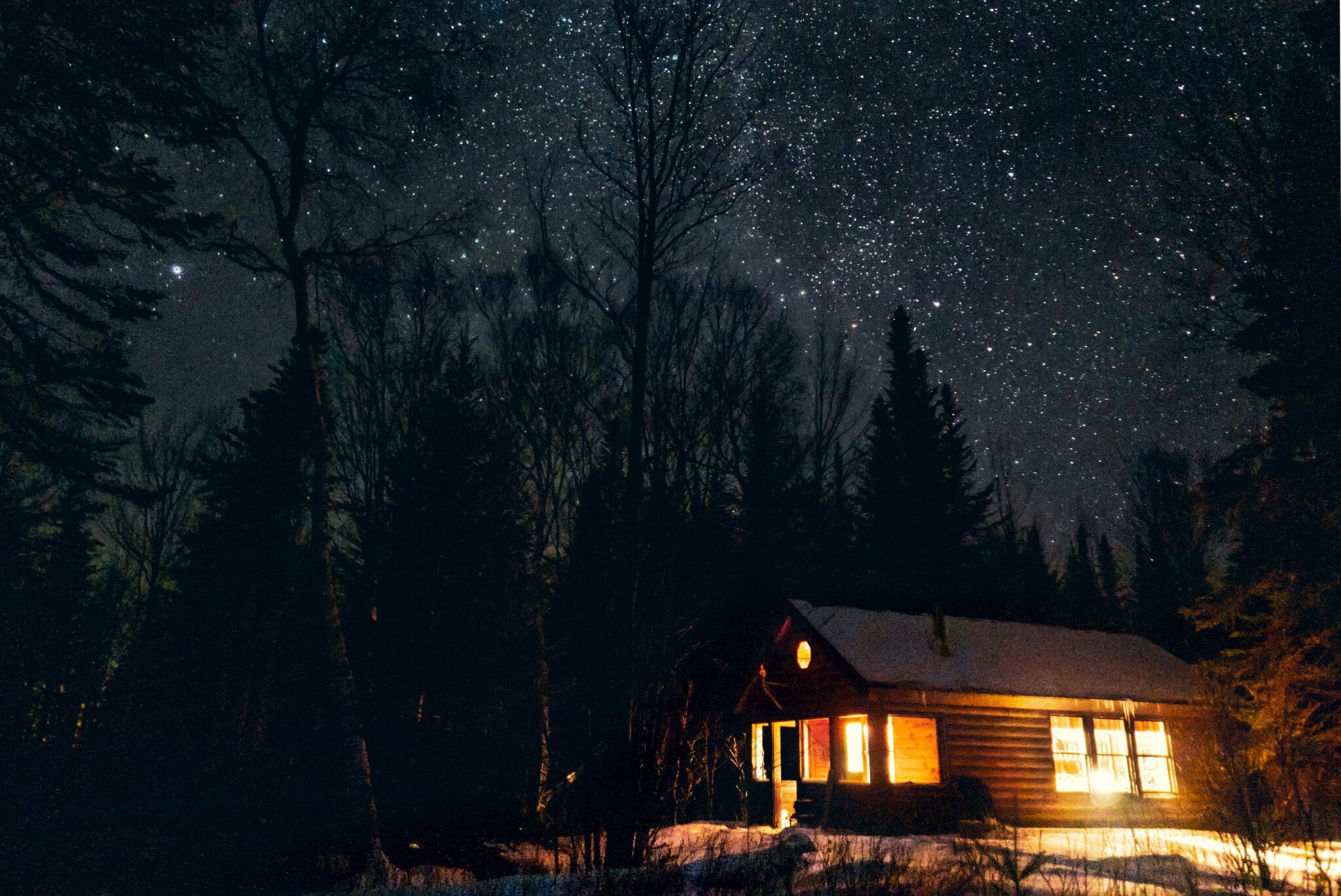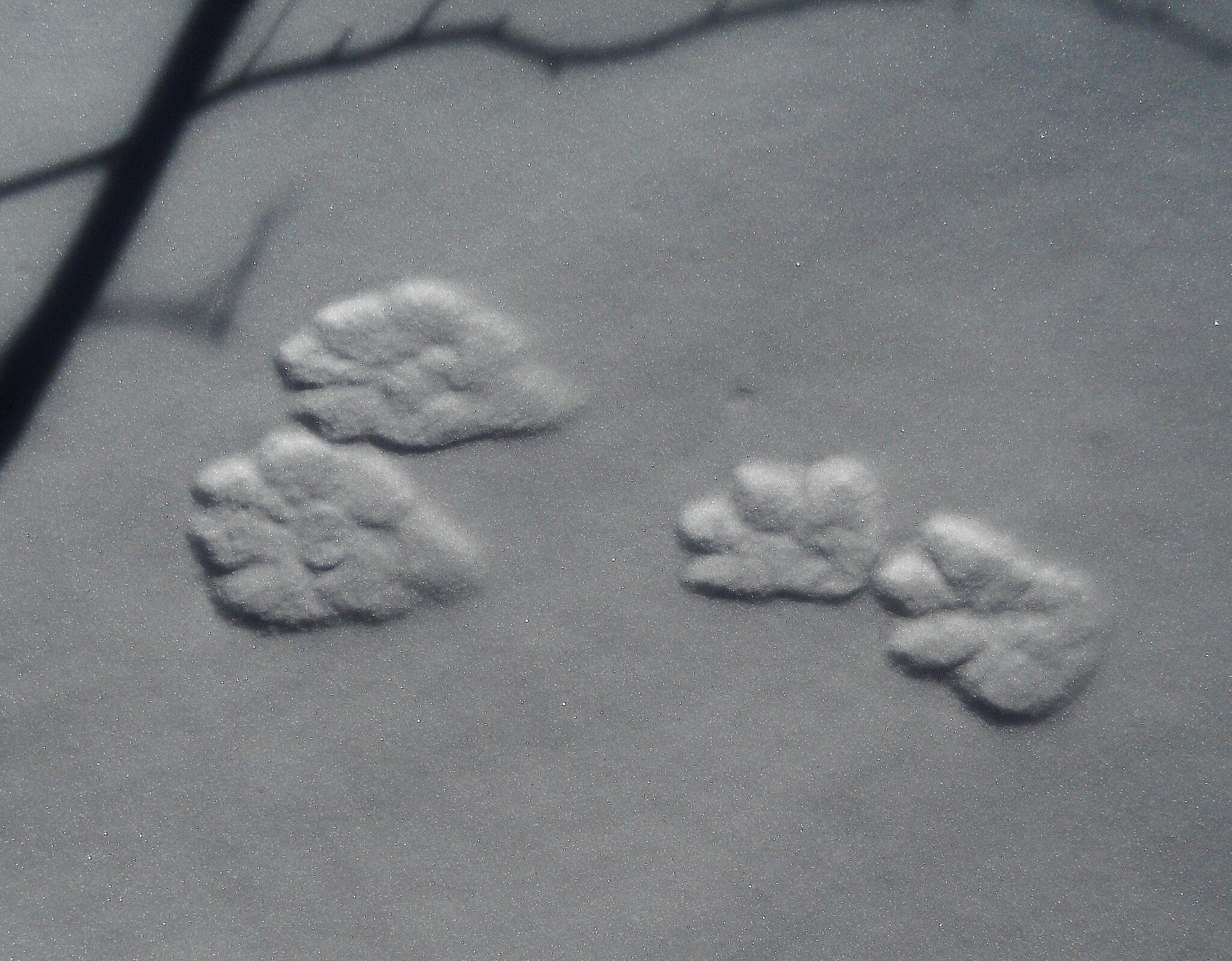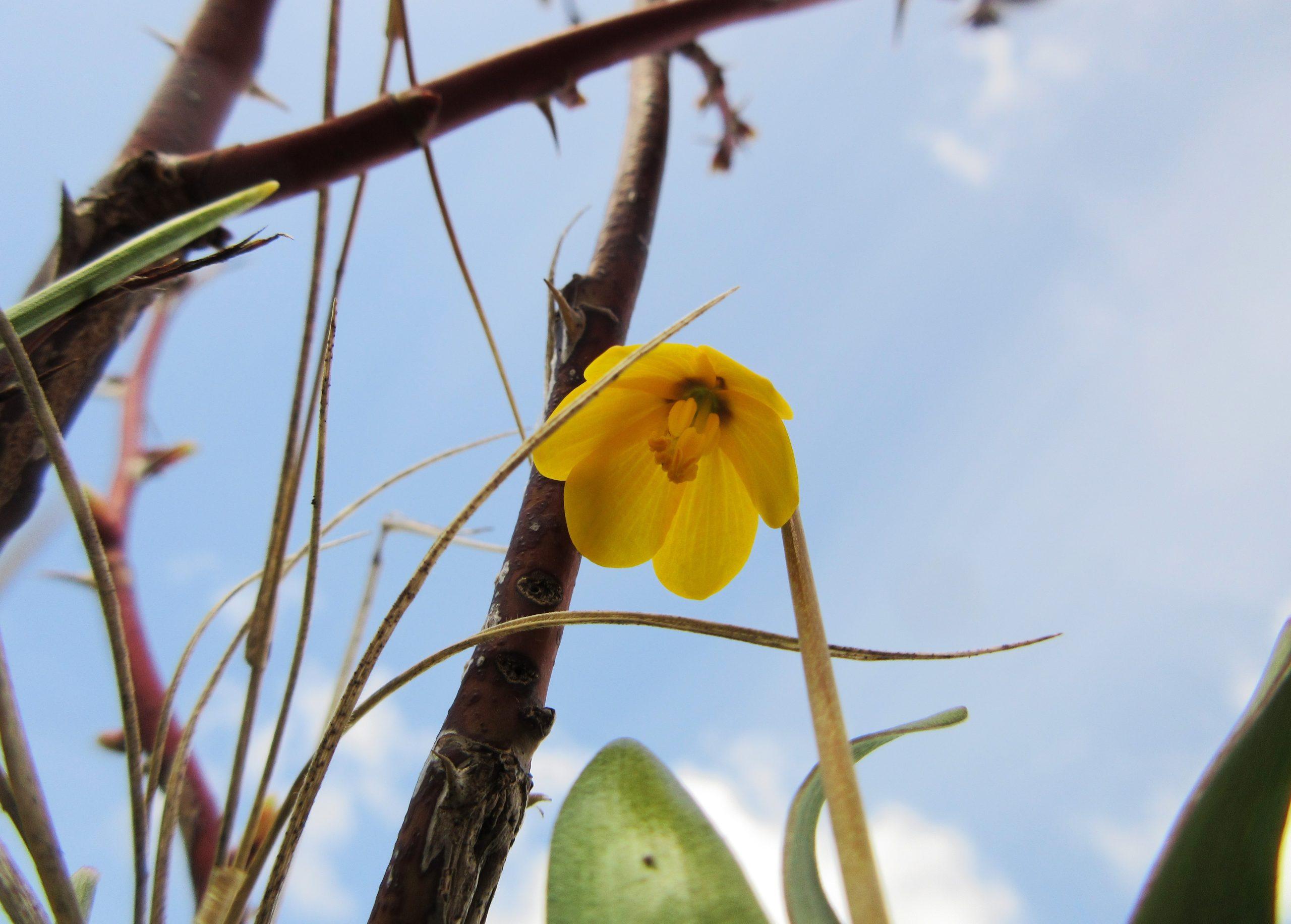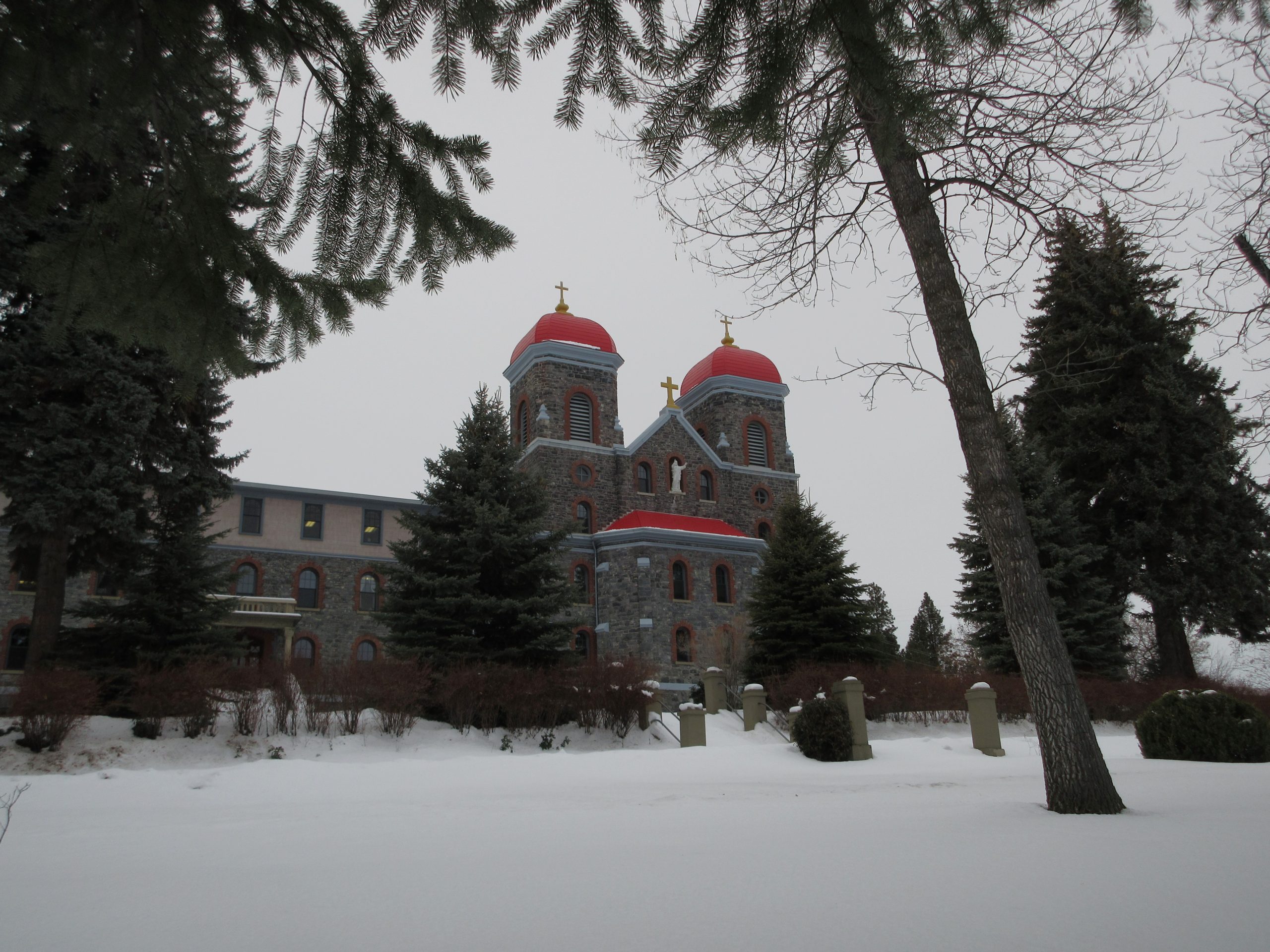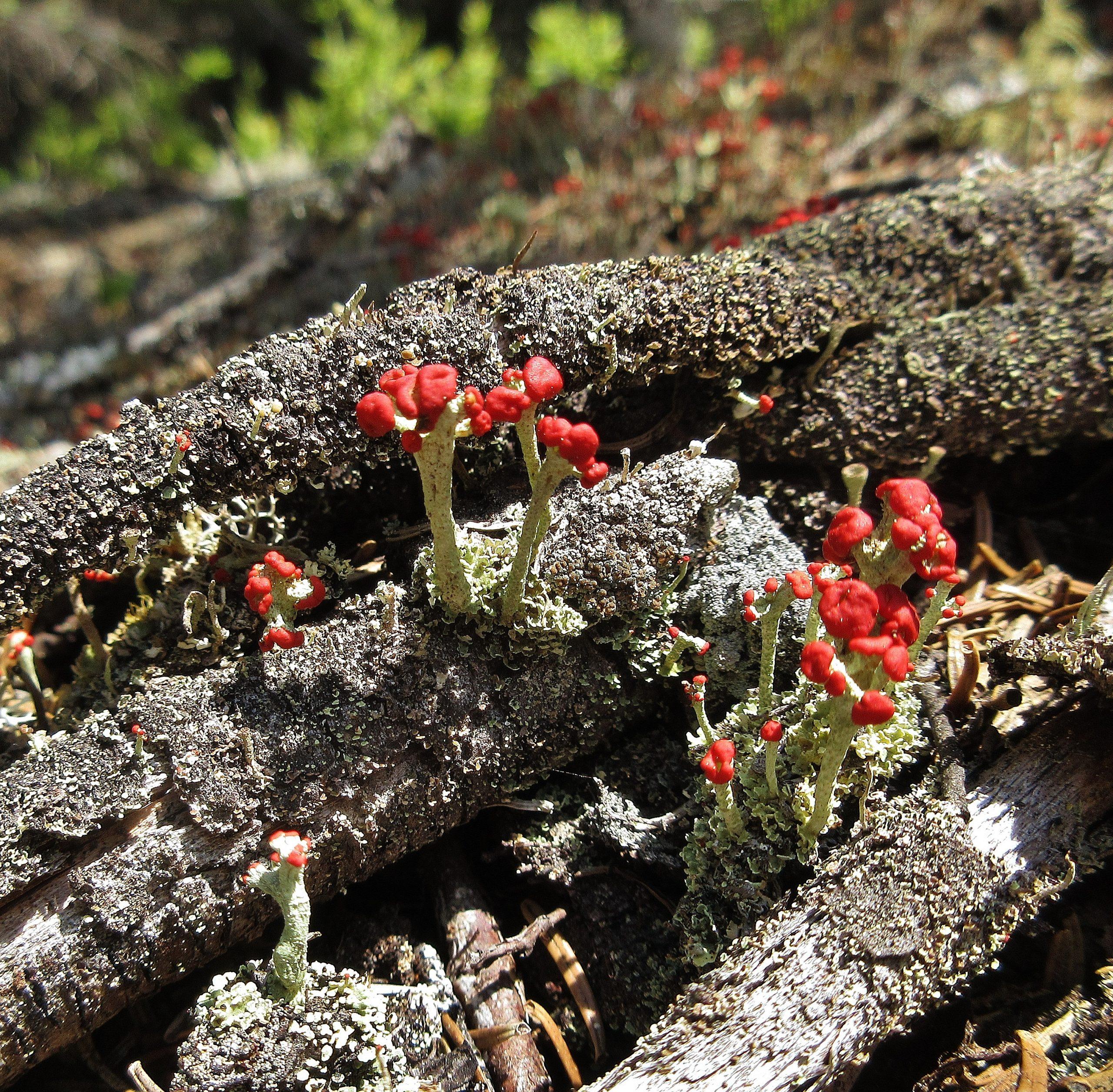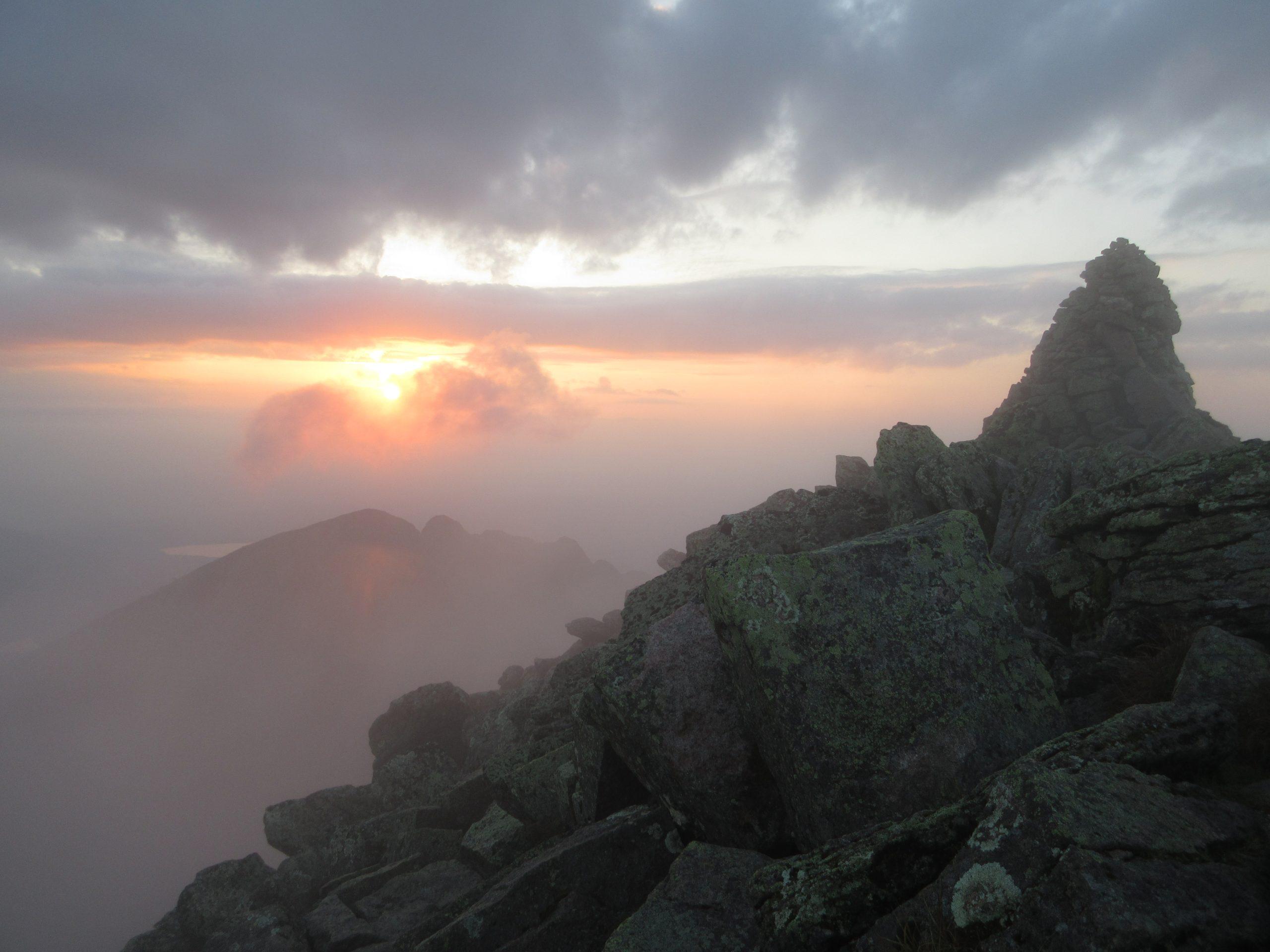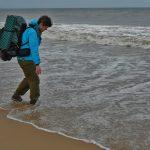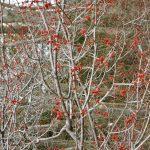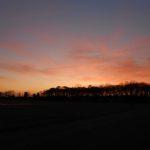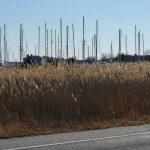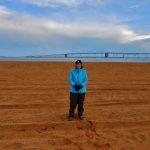I love the tranquility of my cabin in a winter storm. I try to bring in plenty of firewood and water before the new accumulation obliterates my well-packed paths to the woodshed and pump. Then I settle into my warm cocoon. Through my windows, I watch the snow drift down onto my woods and the frozen expanse of First Roach Pond. When the white veil thickens, the world past my shoreline vanishes into a void. I feel the mainstream world recede, as though a portal has closed between ordinary reality and a gentler, more peaceful dimension where my cabin dwells. I feel a sense of security, of respite from the hectic harshness of modern life.
From time to time, I venture out my door for a brief multisensory experience. Icy crystals melt on my bare skin. I listen to the rush of wind, or a stillness so profound that I can hear the tapping of flakes as they land.
I recorded one such moment during a recent nor’easter that delivered about a foot of snow, on a day when the temperature hovered around zero Fahrenheit:
On the day after a storm, when the weather clears, my world shines. White clouds glow against blue sky; fresh snow gleams on the pond, the forest floor, and the boughs of fir trees. I emerge from my cabin to tackle my post-storm chores. I strap on snowshoes and repack the paths to my woodshed, outhouse, pump, and shore. I grab my shovel and clear my woodshed roof, scrambling up snowdrifts along the sides of the shed to extend my reach. I replenish my dwindling supplies of wood and water.
In between storms, the creatures of the forest are out and about, leaving tracks as they go. The snow becomes a journal of their travels. This is a book I’m always reading, whenever I walk through winter woods. I have to admit I’m not yet fully fluent in the language, but I hope to keep learning over time.
Of the many tracks I see, prints of the snowshoe hare are among the most common.
Snowshoe hares are the preferred food of Canada lynx, a large wildcat of northern forests, protected in Maine under the Endangered Species Act. According to a 2019 research paper, a lynx needs to eat one hare every two and a half days – about a dozen hares per month, nearly 150 hares per year – to meet its caloric requirements (https://academic.oup.com/mspecies/article/51/985/136/5669851). Accordingly, there are far fewer lynx than hares. I was delighted to cross paths with a set of lynx tracks just two days after recording my snowshoe hare video.
Other tracks I’ve seen recently include those of ruffed grouse, moose, deer, coyote, fox, river otter, mink (or another small weasel), red squirrel, and smaller rodents (I don’t trust my ability to distinguish between tracks of voles, mice, and shrews).
I returned from my Christmas visit to town December 29. Since then, I’ve spent six straight weeks in the woods, my longest stay so far. I plan to head to town tomorrow to pick up mail and purchase supplies, but I feel no great eagerness to reenter “civilization.”
Over the past forty-three days, I haven’t felt lonely. Out here, all nature is my companion. The local creatures are my neighbors. And I feel I have many friends – including you, my blog readers – who accompany me in spirit.
The time has flown by. Whenever I step outside, the world around me engages my heart, mind, and senses. Every hour offers new wonders.
I’ve had just one visitor: Eddie O’Leary, a former Appalachian Trail Conservancy colleague, who came for a weekend toward the end of January. He’s a professional videographer and photographer. He captured this image of the Milky Way arching above my cabin.
My backwoods abode, humble though it may be, has its place in the cosmos.
